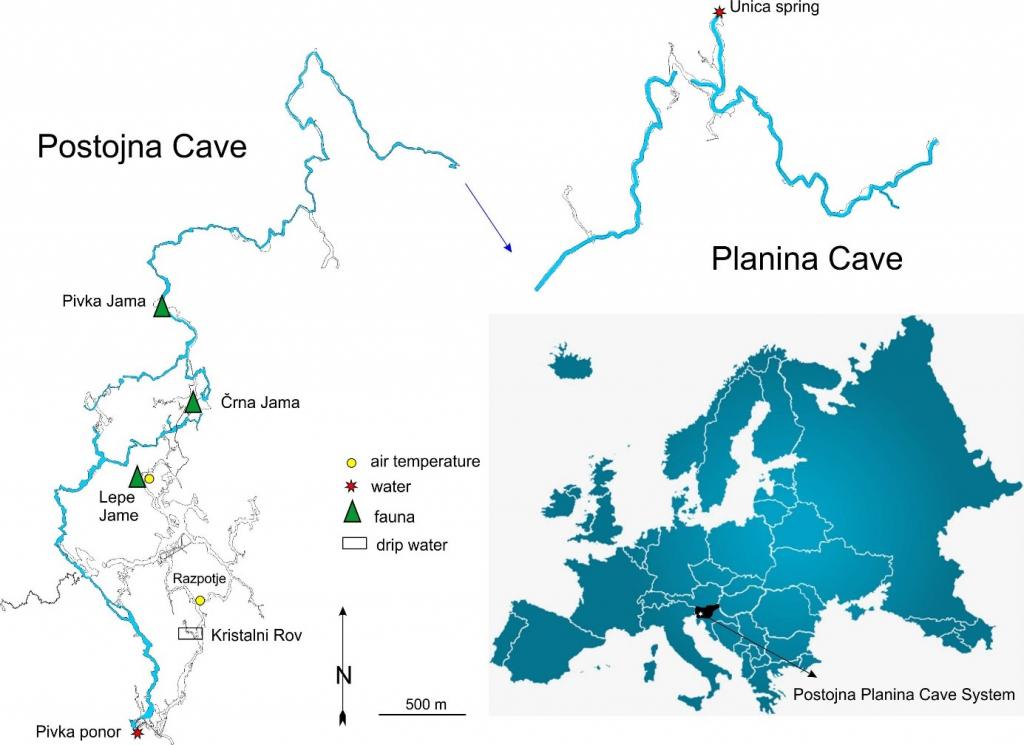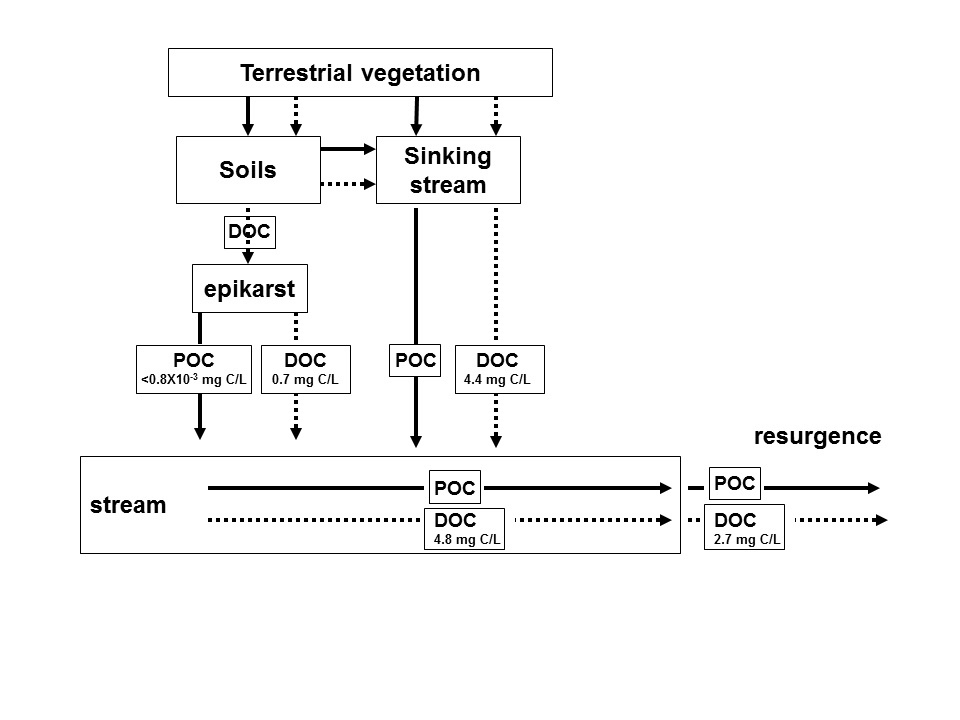Multidisciplinary approach to long-term ecological studies of subterranean environment
Postojna Planina Cave System (PPCS), Karst Critical Zone Observatory (CZO), is proposed as a model for long-term ecological studies in caves. In PPCS, analysis of short-term temperature data shows a muted daily cycle and seasonality, and analysis of long-term temperature data shows an increase, largely the result of climate change. Changes in drip rate of epikarst aquifers above the cave are correlated with rainfall but with lags and complications resulting from differences in longer term rainfall patterns. Analysis of discharge rates indicates a rapid response to precipitation not only in the Pivka River at its sinking, but also at Unica Spring, where discharge is augmented from other parts of the aquifer, including epikarst. Quantitative analysis of the obligate epikarst-dwelling copepod community shows that, unlike most cave communities, complete sampling of the fauna is possible. Finally, organic carbon levels in PPCS indicate likely carbon limitation in the system. These five factors (temperature, drip rate, river discharge, epikarst copepod fauna, and organic carbon) are the appropriate variables for capturing the essential long-term trends in cave ecosystems and their causes.
Source:
PIPAN, Tanja, PETRIČ, Metka, ŠEBELA, Stanka, CULVER, David C. Analyzing climate change and surface-subsurface interactions using the Postojna Planina Cave System (Slovenia) as a model system. Regional environmental change, ISSN 1436-3798, 2019, vol. 19, 2, 379-389, https://link.springer.com/article/10.1007%2Fs10113-018-1349-z, doi: 10.1007/s10113-018-1349-z. [COBISS.SI-ID 42929197]

Postojna Planina Cave Sytem study site and sampling points

Conceptual model of Dissolved Organic Carbon (DOC) and Particulate Organic Carbon (POC) in the Postojna Planina Cave System (PPCS) as a Karst Critical Zone Observatory